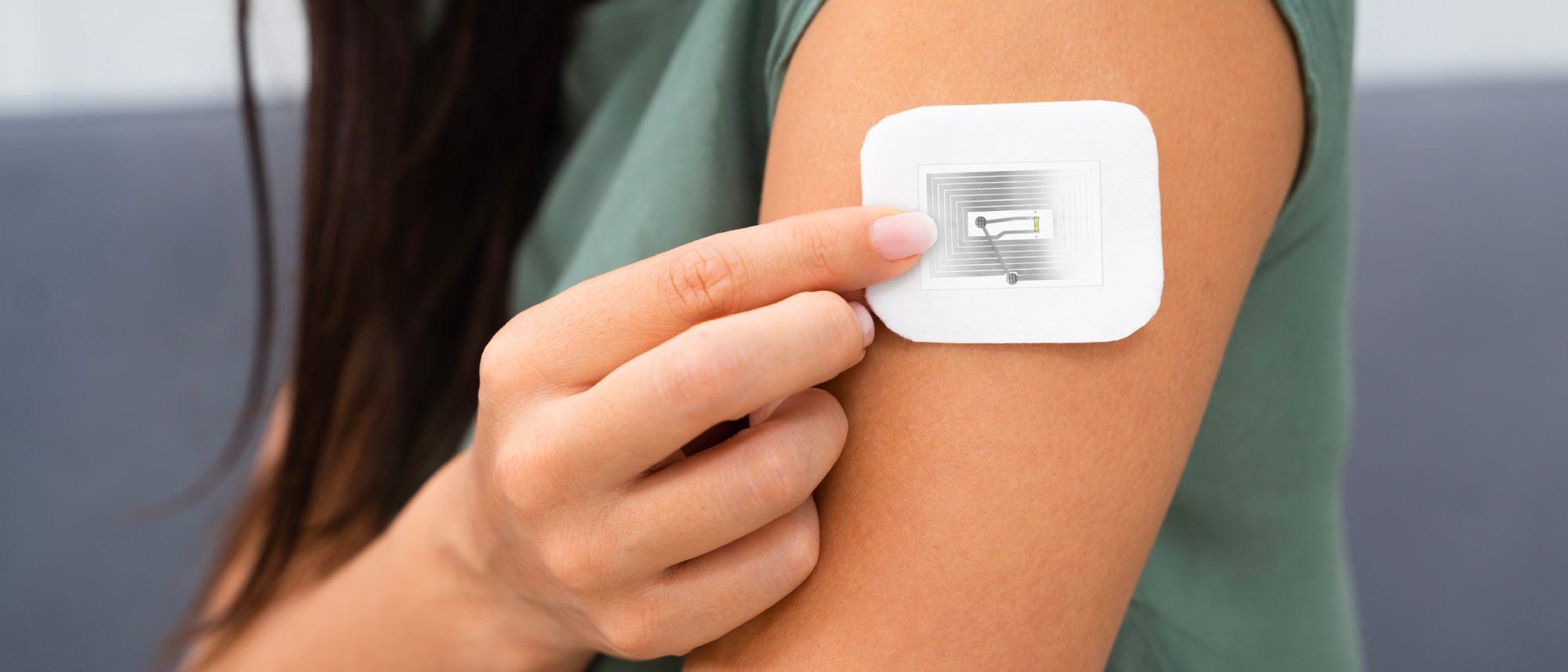Pragmatic CTO Richard Price looks at the role FlexICs – flexible microchips – will play in delivering smart, patient-centric care.
Healthcare has been undergoing a quiet revolution for quite some time, shifting from traditional models that respond to symptoms once they appear, to proactive, personalised care that aims to prevent issues before they arise.
Technology is key to this paradigm shift. Patients can already schedule appointments, order medication or continuously monitor vital statistics from the comfort of their own home. But next-generation healthcare will expand upon the existing network of smart devices, bringing intelligence to everyday objects and uniting physical, biological and digital systems to create a holistic model centred on disease prevention and early detection. And FlexICs are set to be an important part of this medical Internet of Everything.
The changing face of healthcare
Healthcare has come a long way in the last 200 years. If you were a patient in 1824, you might – or might not – have been diagnosed with the stethoscope, which had been invented less than 10 years before. But heaven forfend you should require any kind of surgery, as it would be around 20 years before the use of anaesthesia would come onto the scene. Yes, Medicine 1.0 was a tough place to be.
The 19th century was, however, a period of rapid medical advancement. Louis Pasteur and Robert Koch began to develop germ theory, understanding that diseases were caused by germs, rather than ‘bad air’. X-rays were used for the first time, and the first vaccines – for rabies, anthrax and cholera – came into being.
The evolution of patient care continued apace throughout the 20th century, when the advent of digital technology heralded a new age. While still largely reactive, treating symptoms as they arose, Medicine 2.0 saw the introduction of electronic health records, reducing errors and improving clinical outcomes. Internet access also gave patients access to health information and more control over their own wellbeing. Now, as the Internet of Things becomes the Internet of Everything, Medicine 3.0 promises an interconnected, digital health system focused on preventative measures and holistic health.
The dawn of Medicine 3.0
Medicine 3.0 – a term initially coined by Peter Attia, MD – will depend on personalised data– captured from billions smart physical objects. Underpinned by artificial intelligence (AI), it will rely on extensive data to reduce the delta between lifespan – how long people live overall – and health-span, the number of years people enjoy good levels of fitness and strength.
This will be difficult to achieve with silicon chips alone; there simply isn’t enough fab capacity in the world producing the right kind of chips to address the surge in demand. And it wouldn’t be cost-effective to use silicon for many of these workloads even if there were. The long lead times and high costs associated with silicon chip design mean that it is best reserved for creating complex, higher-spec chips suited to applications that require an elevated level of performance.
By contrast, FlexICs deliver just enough performance for a very wide range of simple tasks. But that simplicity is their strength and, it’s what allows them to provide ubiquitous intelligence and connectivity at a low price point and reduced environmental impact. They’re also fast to produce: our foundry services can take designs from tape-out to delivery in just four weeks, accelerating time to market and allowing for rapid innovation.
The application of FlexICs in Medicine 3.0
Wearable healthcare devices will form a key pillar of next-generation healthcare, particularly where healthy aging is concerned. Thanks to their low cost and ultra-thin, flexible form factor, FlexICs will be a game changer, working alongside established devices to improve patient comfort while reducing cost and democratising availability.
They can also open up new applications to tackle the four main areas of health deterioration:
Cardiovascular disease: Comfortable and convenient FlexIC-based smart patches could, for example, be used as a quick and easy way to detect atrial fibrillation – heartbeat irregularities – that may foreshadow more serious coronary events.
Cancer: Similarly, smart patches could be used to detect skin pH (acidity/alkalinity) levels and predict diseases before they take hold. A recent study pioneered a non-invasive technique for the early detection of breast cancer from fingertip smears, for example, necessitating just such a comfortable, low-cost, patient-friendly solution.
Diabetes: Monitoring is well established, but next-generation solutions will focus on improved comfort/wearability and predictive healthcare for prediabetics. Again, the flexibility and low unit cost of FlexICs make them an ideal candidate for both comfort and widescale, budget-friendly deployment.
Neurodegeneration, such as Alzheimer’s disease and dementia: Early detection of neurodegenerative diseases will bring together multiple approaches; imaging, such as MRI and/or PET scans, may be combined with biomarker detection, identifying proteins or genes. Such solutions will be reliant on low-cost sensors to provide the data points for AI/machine learning to interpret, giving a more holistic picture of neurological health.
Of course, no individual technology is a silver bullet. But, by reducing costs and democratising access, FlexICs can make a tangible contribution to Medicine 3.0 and the goal of optimised interventions centred on prevention, rather than cure.


